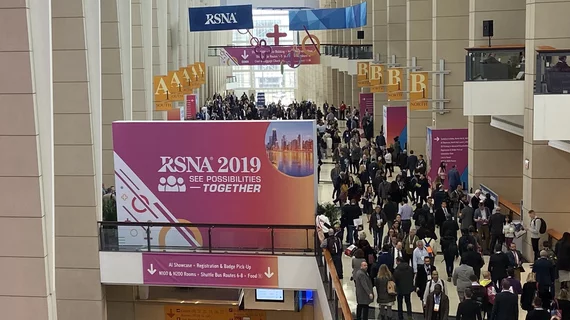RSNA 2019: Patient-centered care means radiology must make reports more accessible
Clinicians can decipher radiology reports, but as consumers demand more involvement in their care, new research suggests changes need to be made to make these documents more digestible for patients.
“Despite all the time and effort we put into crafting these reports, I think we have to acknowledge that this (clinician’s understanding) is only 50 percent of the overall communication,” Joshua K. Cho, MD, a third-year diagnostic radiology resident at Penn Medicine, said during a Tuesday morning session at the RSNA annual meeting.
Cho pointed out that many healthcare institutions are making radiology reports available through patient portals. Whether a majority of patients actually use these online resources is up for debate, but creating patient-centered radiology resources is a must.
“I think we do have to broaden this conversation to include whether patients are understanding these reports or not,” he noted.
With this in mind, Cho and his colleagues decided to crowdsource the question, turning to Amazon Mechanical Turk, a customizable tool for surveying laypeople for tasked-based research.
For their first test, participants—a majority of whom were well-educated healthcare workers—were presented with one of five radiology reporting styles: traditional unstructured, structured, impression only, patient summary, or traditional unstructured with a patient summary. For example, an oncology document relaying the results of a CT abdomen and pelvis scan. Respondents were asked to summarize the overall message of the report.
More than 200 “patient-surrogates” responded within 48 hours; less than half of the 877 read imaging reports were correctly interpreted. About 57% of participants understood the findings when using the patient summary format compared to the 39% who used the unstructured report. And when a patient-friendly attachment was paired with unstructured information, comprehension dropped.
Those who were only provided a patient summary or impression said they wanted more information. And a majority of respondents wanted access to the full radiology report through an electronic patient portal.
Cho et al. also conducted a second task, randomly assigning respondents a radiology colloquialism such as “gallbladder is decompressed” or “inspiratory lung volumes are low.” Such terms including modifiers like “low,” “decompressed” and "under-distended" were hardest to understand for the patient surrogates.
“We expected that they would be generally confused by these statements, but I think what we were shocked by was the magnitude at which they were confused,” Cho said during the session.
Overall, Cho reminded the audience that the survey respondents were not patients, but maintained that tailored patient summaries could help increase patients' comprehension of radiology reports.

